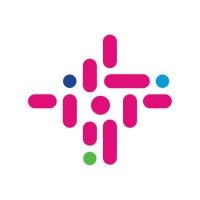预约演示
更新于:2025-05-07
Sitosterolemia
谷甾醇血症
更新于:2025-05-07
基本信息
别名 PHYTOSTEROLEMIA、Phytosterolaemia、Phytosterolemia + [21] |
简介 An extremely rare autosomal recessive inherited disorder caused by mutations in the ABCG5 or ABCG8 genes. It is characterized by a defective sterolin transporter that impairs the elimination of plant sterols and, to a lesser degree, cholesterol from the body. These fatty substances build up in the tissues including arteries and skin, resulting in atherosclerosis and xanthomas. |
关联
1
项与 谷甾醇血症 相关的药物靶点 |
作用机制 NPC1L1抑制剂 [+1] |
在研机构 |
最高研发阶段批准上市 |
首次获批国家/地区 美国 |
首次获批日期2002-10-25 |
56
项与 谷甾醇血症 相关的临床试验CTR20244419
依折麦布片人体生物等效性研究
本试验旨在研究健康受试者单次空腹和餐后口服湖南千金湘江药业股份有限公司研制、生产的依折麦布片(10 mg)的药代动力学特征;以MSD International GmbH(Singapore Branch)生产的依折麦布片(益适纯®,10 mg)为参比制剂,比较两制剂中药动学参数Cmax、AUC0-t、AUC0-∞,评价两制剂的人体生物等效性,并观察两制剂在健康受试者中的安全性。
开始日期2024-12-06 |
申办/合作机构 |
CTR20242792
依折麦布片在中国成年健康受试者中的生物等效性研究
主要研究目的 研究空腹/餐后状态下口服受试制剂依折麦布片(江西施美药业股份有限公司生产)与参比制剂依折麦布片(益适纯,MSD International GmbH (Singapore Branch)生产)在中国健康成年受试者体内的药代动力学特征,评价空腹/餐后状态口服两种制剂的生物等效性。次要研究目的 评估受试制剂依折麦布片和参比制剂依折麦布片(益适纯)在中国健康成年受试者中的安全性。
开始日期2024-09-09 |
申办/合作机构 |
CTR20243141
依折麦布片人体生物等效性试验
主要目的:
在健康男性与女性受试者中于空腹/餐后条件下,评价受试制剂依折麦布片(规格:10 mg,生产商:南京海鲸药业股份有限公司)和MSD Pharma(Singapore)Pte. Ltd.为持证商的参比制剂依折麦布片(益适纯®,规格:10 mg)的生物等效性。
次要目的:
观察受试制剂依折麦布片与参比制剂依折麦布片(益适纯®)在健康受试者中的安全性。
开始日期2024-08-05 |
申办/合作机构 |
100 项与 谷甾醇血症 相关的临床结果
登录后查看更多信息
100 项与 谷甾醇血症 相关的转化医学
登录后查看更多信息
0 项与 谷甾醇血症 相关的专利(医药)
登录后查看更多信息
492
项与 谷甾醇血症 相关的文献(医药)2025-04-22·The Journal of Clinical Endocrinology & Metabolism
Opportunistic Detection of Phytosterolemia During Genetic Testing for FH: Case Series and Contextual Review
Review
作者: Hooper, Amanda J ; Loh, Wann Jia ; Chan, Dick C ; Bell, Damon ; Pang, Jing ; Watts, Gerald F
2025-04-01·Italian Journal of Dermatology and Venereology
Sitosterolemia: a new ABCG5 mutation
Article
作者: Didona, Dario ; Kussini, Jacqueline ; Steinert, Markus ; Bierhoff, Erhard ; Steinert, Ursula
2025-04-01·Journal of Paediatrics and Child Health
Sitosterolemia—An Underdiagnosed and Heterogeneous Lipid Disorder. A Case Series From a Tertiary Care Centre in Australia
Article
作者: Ooi, Siew Ean ; Chisholm, Kerryn ; Srinivasan, Shubha ; Gamage, Dilhara ; Kilo, Tatjana
5
项与 谷甾醇血症 相关的新闻(医药)2025-01-23
·米内网
精彩内容
1月22日,鲁抗医药公告称,公司以仿制4类报产的依折麦布片获批上市并视同过评。依折麦布片为血脂调节剂,2023年在中国三大终端六大市场销售额超过14亿元。
依折麦布通过抑制小肠对胆固醇吸收来减少血液中胆固醇水平,能够附着在小肠绒毛上皮的刷状缘,抑制胆固醇的吸收,从而减少小肠中胆固醇向肝脏转运,使得肝脏胆固醇贮量降低从而增加血液中胆固醇的清除。该药主要用于原发性高胆固醇血症、纯合子家族性高胆固醇血症(HoFH)和纯合子谷甾醇血症(或植物甾醇血症)等症状。
依折麦布片已被纳入第七批集采,米内网数据显示,2023年中国三大终端六大市场(统计范围详见本文末)依折麦布片销售额超过14亿元,同比下滑26.89%;2024年其上半年销售额超过8亿元,同比增长6.98%。
中国三大终端六大市场依折麦布片销售情况(单位:万元)
来源:米内网格局数据库
目前国内市场共有15家企业获得了依折麦布片的生产批文,包括欧加农、山德士、山东新时代药业、步长制药、福元医药、圣华曦、浙江诺得药业、方盛制药、鲁抗医药等。
2024年至今鲁抗医药获批品种
来源:米内网中国申报进度(MED)数据库
2024年至今,鲁抗医药已有10个品种获批生产并视同过评,包括依折麦布片、聚乙二醇钠钾散、阿哌沙班片、盐酸莫西沙星氯化钠注射液、非布司他片、注射用盐酸万古霉素、盐酸莫西沙星片、腺苷钴胺胶囊、多索茶碱注射液、枸橼酸托法替布片,进一步丰富了公司的产品线。
资料来源:米内网数据库、公司公告注:米内网《中国三大终端六大市场药品竞争格局》,统计范围是:城市公立医院和县级公立医院、城市社区中心和乡镇卫生院、城市实体药店和网上药店,不含民营医院、私人诊所、村卫生室,不含县乡村药店;上述销售额以产品在终端的平均零售价计算。
本文为原创稿件,转载请注明来源和作者,否则将追究侵权责任。投稿及报料请发邮件到872470254@qq.com稿件要求详询米内微信首页菜单栏商务及内容合作可联系QQ:412539092
【分享、点赞、在看】点一点不失联哦
上市批准一致性评价
2024-12-24
·米内网
精彩内容
日前,国家药监局官网显示,山东新时代药业的依折麦布片以仿制4类报产获批,视同过评。米内网数据显示,依折麦布片在2023年中国三大终端六大市场(统计范围见文末)销售额超过10亿元,是血脂调节剂(化学药+生物药)TOP3产品。
来源:米内网一键检索
依折麦布片适应症包括:原发性高胆固醇血症,作为饮食控制以外的辅助治疗,可单独或与HMG-CoA 还原酶抑制剂(他汀类)联合应用于治疗原发性(杂合子家族性或非家族性)高胆固醇血症,可降低总胆固醇(TC)、低密度脂蛋白胆固醇(LDL-C)、载脂蛋白B(ApoB);纯合子家族性高胆固醇血症(HoFH),与他汀类联合应用,可作为其他降脂治疗的辅助疗法(如LDL-C血浆分离置换法),或在其他降脂治疗无效时用于降低HoFH患者的TC和LDL-C水平;纯合子谷甾醇血症(或植物甾醇血症),作为饮食控制以外的辅助治疗,用于降低纯合子家族性谷甾醇血症患者的谷甾醇和植物甾醇水平。
2023年中国三大终端六大市场血脂调节剂产品TOP5来源:米内网格局数据库
依折麦布片在2023年中国三大终端六大市场销售额超过10亿元,是血脂调节剂(化学药+生物药)TOP3产品,欧加农制药的市场份额最大,2024年上半年同比增长近7%。米内网数据显示,依折麦布片有14家企业拥有生产批文,山东新时代药业、江苏德源药业、北京百奥药业、重庆圣华曦药业等12家过评,山东鲁抗医药、华润赛科药业等6家以新分类报产在审。
今年以来,山东新时代药业已有20款产品获批,涵盖多个治疗大类,其中,抗肿瘤和免疫调节剂最多,有醋酸曲普瑞林注射液、普乐沙福注射液、来曲唑片等6款产品;其次是心脑血管系统药物,有依折麦布片、硝苯地平控释片、沙库巴曲缬沙坦钠片等4款产品。
资料来源:国家药监局官网、米内网数据库注:米内网《中国三大终端六大市场药品竞争格局》,统计范围是:城市公立医院和县级公立医院、城市社区中心和乡镇卫生院、城市实体药店和网上药店,不含民营医院、私人诊所、村卫生室,不含县乡村药店;上述销售额以产品在终端的平均零售价计算。如有疏漏,欢迎指正!
本文为原创稿件,转载请注明来源和作者,否则将追究侵权责任。投稿及报料请发邮件到872470254@qq.com稿件要求详询米内微信首页菜单栏商务及内容合作可联系QQ:412539092
【分享、点赞、在看】点一点不失联哦
上市批准
2024-07-04
·上海医药
近日,上海医药控股子公司常州制药厂有限公司的依折麦布片收到国家药品监督管理局(以下简称“国家药监局”)颁发的《药品注册证书》(证书编号:2024S01240),该药品获得批准生产。
基本情况
药物名称
依折麦布片
剂 型
片剂
规 格
10mg
注册分类
化学药品4类
药品批准文号
国药准字 H20244067
审批结论
符合药品注册的有关要求,批准注册,发给药品注册证书。
相关信息
依折麦布片主要用于原发性高胆固醇血症、纯合子家族性高胆固醇血症(HoFH)和纯合子谷甾醇血症(或植物甾醇血症)等症状。最早 ORGANON 研发,并于2002年在美国上市。2022年12月,常州制药厂就该药品向国家药监局提出注册上市申请,并获受理。
IQVIA数据库显示,2023年该产品医院采购规模为人民币 55,213万元。
根据国家相关政策,按新注册分类获批仿制药的品种在医保支付及医疗机构采购等领域将获得更大的支持力度。因此常州制药厂的依折麦布片获得批准生产,有利于扩大该药品的市场份额,提升市场竞争力,同时为公司后续产品开展仿制药申报积累了宝贵的经验。
带量采购申请上市一致性评价
分析
对领域进行一次全面的分析。
登录
或

生物医药百科问答
全新生物医药AI Agent 覆盖科研全链路,让突破性发现快人一步
立即开始免费试用!
智慧芽新药情报库是智慧芽专为生命科学人士构建的基于AI的创新药情报平台,助您全方位提升您的研发与决策效率。
立即开始数据试用!
智慧芽新药库数据也通过智慧芽数据服务平台,以API或者数据包形式对外开放,助您更加充分利用智慧芽新药情报信息。
生物序列数据库
生物药研发创新
免费使用
化学结构数据库
小分子化药研发创新
免费使用




